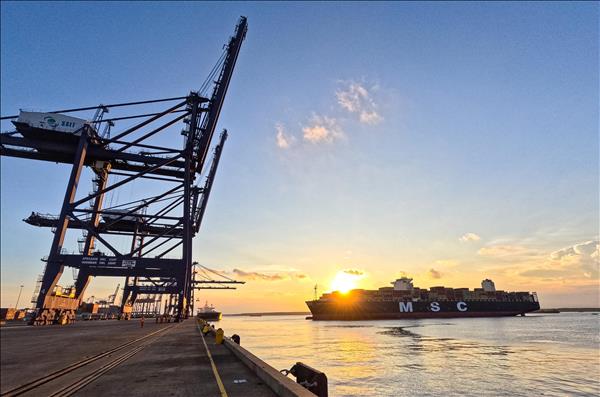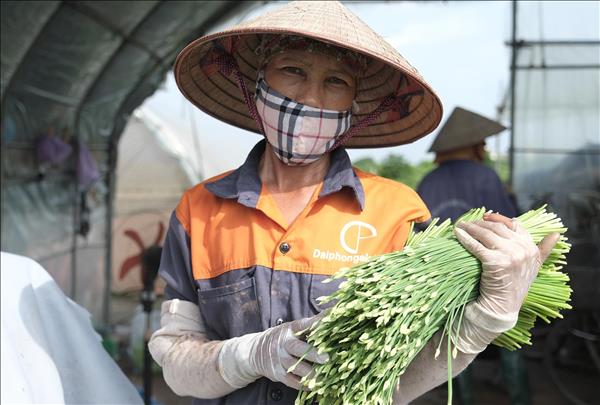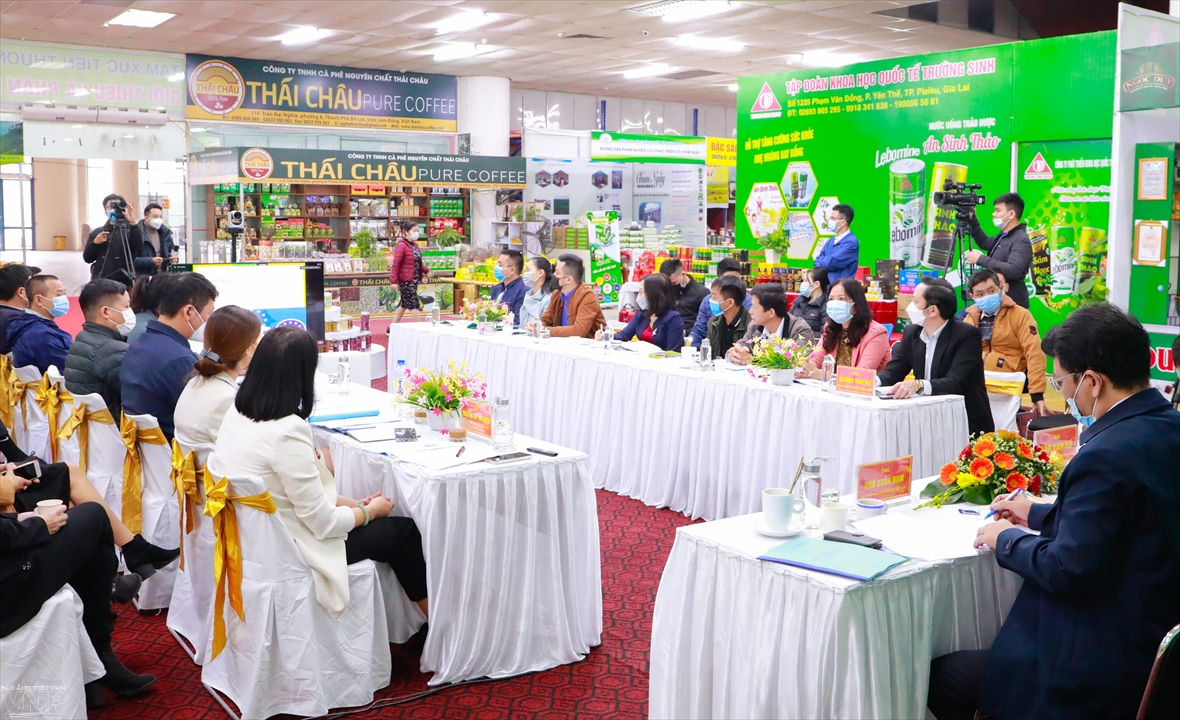|
The Rural Finance Project II (RFP II), funded by the World Bank
(WB) and run by the Vietnamese Government and the Bank for Investment and
Development of Vietnam (BIDV) which was in charge of management and
re-lending, was put into operation on April 14, 2003. With a credit of 235
million USD, the Project has contributed greatly to the economic
development as well as improvement of the living conditions of rural
people.
Assisting in hunger eradication and poverty
reduction
|
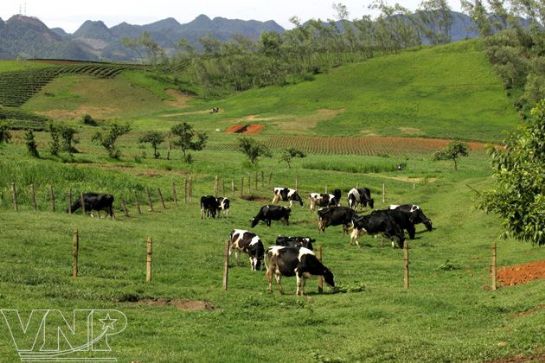
The Project’s
financial source helps many households engaged in cow-rearing in Moc
Chau District, Son La Province to expand the scale of farms and
improve their household income.
|
|
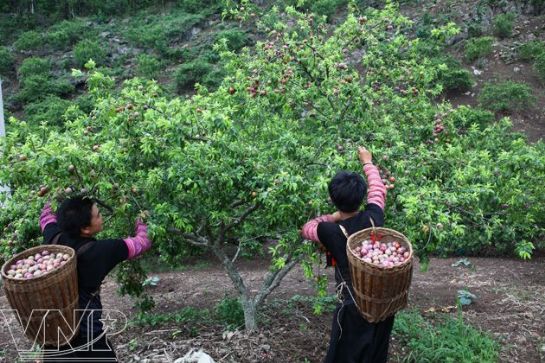
Loans from the RFP II
help Hau A Canh and his brother, Hau A Son (from the Mong ethnic
group in Sub-area 3 of Moc Chau Farm Town, Son La Province) achieve
a bumper plum harvest.
|
|
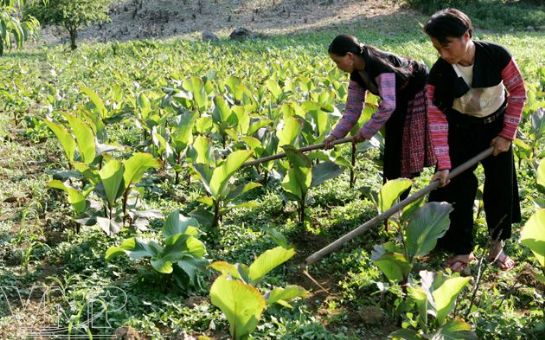
With loans from RFP II, Thao A Lo and his wife
(from the Mong ethnic group
in Ta Phinh Hamlet of Tan Lap
Commune, Moc Chau District, Son La Province)
grow edible canna
plants to improve their finances.
|
|
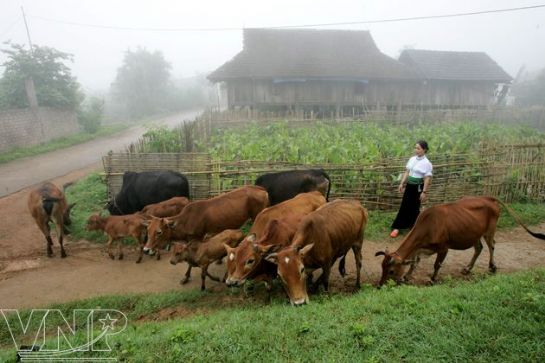
In 2006 Lo Thi Sua (from the Thai ethnic group
in Muong Hamlet of Phieng Luong Commune,
Moc Chau District, Son
La Province) borrowed money from the Project and bought
three
calves. Now her family has a herd of 12 cows and
calves.
|
|
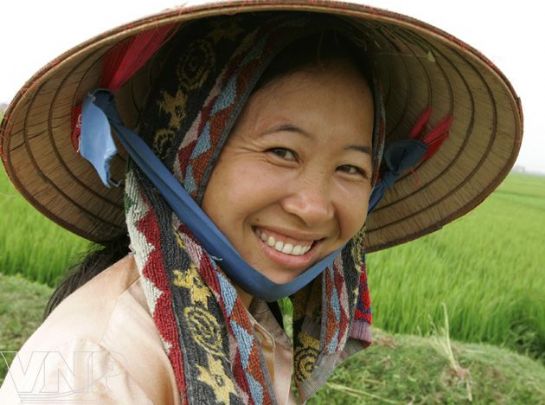
Rural women equally benefit from the Project
when 40% of
the sub-borrowers are successful women.
|
The Rural
Finance Project II (RFP II) is a succession of the Rural Finance Project I
(RFP I) with the target of supporting Vietnam’s efforts to eliminate
hunger and reduce poverty, develop the rural economy, as well as improve
the living conditions of people in rural areas via the feasible projects
of individuals, households and businesses in all production and trading
sectors. So far, the Project has been successful in reaching the target of
providing credits to expand investment in rural areas. By September 30,
2009 the Project’s credit funds have created a list of investment of 870
million USD (13,785 billion VND), in which the WB fund is equivalent to
467 million USD (7,480 VND), accounting for 53.8% of the total investment;
additional fund from credit organizations is 124 million USD (1,935
billion VND), accounting for 14.3%; and capital source from the
sub-borrowers is 278 million USD (4,369 billion VND) or 31.9%.
According
to a report on the Project’s results, 1 USD from the WB capital source
creates 3.91 USD in investment in the rural areas, an increase of 1.51 USD
compared with expectation when the project was assessed. Through the Rural
Development Fund II (RDF II) and the Micro Loan Fund (MLF) – the two
sub-credit funds, RFP II encouraged private investment by providing loans
for nearly 500,000 feasible projects of individuals, households and
private businesses in rural areas. With the medium- and long-term loans
reaching 99.2%, the Project has achieved the target of providing loans for
the farmers in the context that the Vietnamese banking system lacks these
sources to invest for the rural development. The Project has improved the
economic life of women since nearly 40% of the sub-borrowers are rural
women, helping enhance the gender equality.
Promoting the development of the private
economic sector
|
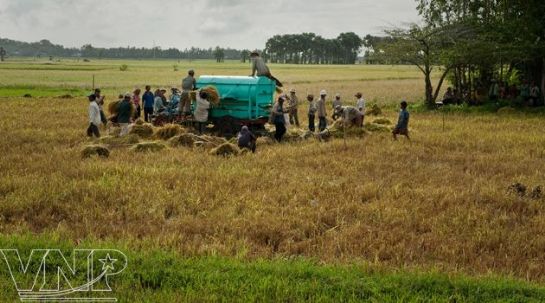
nbsp;The Project provides medium- and long-term
loans for private businesses
in rural areas to buy equipment and
machines.
|
|
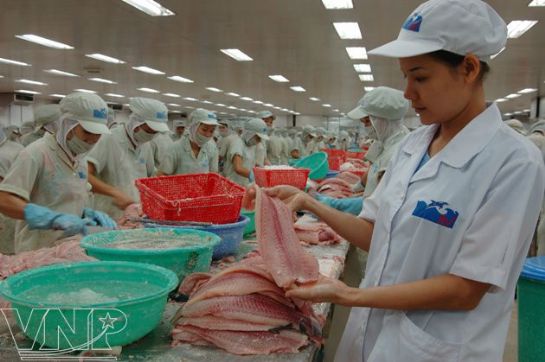
Many businesses
prosper from growing and processing aquatic products and sea
products.
|
|
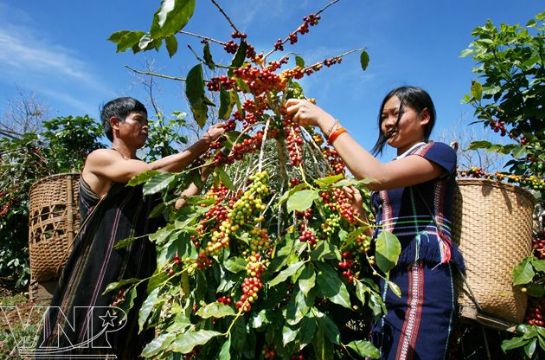
RFP II provides loans for people in 60 out of
the 63 provinces and cities
in the country, creating nearly
275,000 jobs in the rural areas.
|
The Rural
Finance Project II provided loans for people in the rural areas in 60 out
of the 63 provinces and cities in the country, covering all economic
sectors and branches. 30.1% of the loans were provided for trading and
services activities; 28.9% for animal husbandry; 18.1% for farming; 6.4%
for sea products and aquatic products; 4.1% for processing; 2.2% for
handicraft industry; and 9.8% for other economic activities. There were no
overdue debts from the participating financial institutions (PFI) and BIDV
(the project manager). The average rate of overdue debts of the
sub-borrowers and PFIs was very low (0.36% compared with 2% set for the
last period target).
Apart from
increasing investment in the agricultural private economic sector in rural
areas, the funded sub-projects had positive effects on the
non-agricultural activities, creating jobs and increasing income of rural
people. The Project created nearly 275,000 jobs in the rural areas. On
average, a sub-project (capitalized at 64 million VND or 4,050 USD)
created 1.6 jobs, which shows that the Project’s capital source has a high
coefficient of job creation. The rate of PFI’s withdrawal of capital from
the sub-borrowers was high (over 99%), showing the effectiveness and
capability of the Project to improve incomes. According to a survey on the
Project’s impact on the sub-borrowers carried out in April 2010, RFP II
had a positive impact on the financial access in the rural areas. Up to
39% of people who received loans said that through the Project, for the
first time they could access the banking and finance services; 75% said
they would not have implemented their business plan or would have had to
reduce investment if they had not received loans from the Project; 64%
said their personal saving had increased; and 91% said the loans had
helped create jobs or increase family incomes.
The above
achievements are attributed to 243 cars serving as mobile banks, bought
with the Project’s capital, which brought the banking services to poor
people in the remote and sparse areas where the bank’s branches have not
yet been established. About one thirds of MLF’s capital source was used as
loans in the northern midland and mountainous areas which have the highest
rate of poor people in the country.
Enhancing the institutional ability of the
financial institutions
|
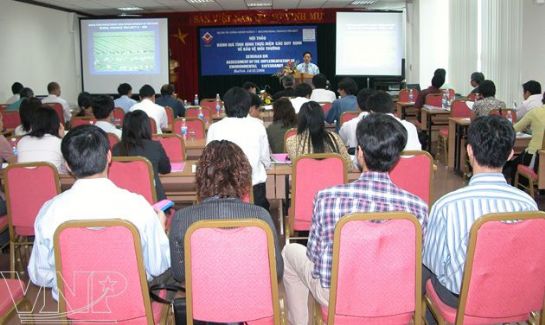
Tens of thousands of managers and specialized
cadres of the banks
are trained and re-trained, contributing to
enhancing the institutional
ability of financial institutions
participating in the project.
|
|
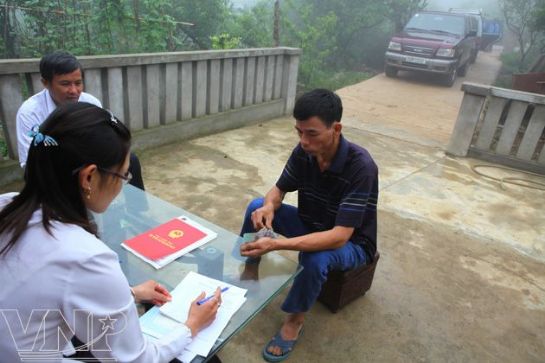
243 cars serving as mobile banks, which are
bought with the Project’s capital,
bring the banking services to
poor people in remote and sparse
areas.
|
The Rural
Finance Project II has reached the target of increasing the
competitiveness in providing the banking services in rural areas. Compared
with the seven financial institutions participating in the Rural Finance
Project I, the number of financial institutions participating in the
disbursement of RFP II’s capital source has increased to 25 units. In RFP
I, disbursement via the Vietnam Bank of Agriculture and Rural Development
(AGRIBANK) accounted for 73% of RFP I’s capital source at the end of the
Project on December 31, 2001. But in RFP II, although AGRIBANK was still
in charge of the disbursement of the Project’s capital source,
disbursement decreased to 34% at the end of the Project on September 30,
2009.
Participating in the Project, the PFIs must be subject to a strict
selection process which examines their ability to reach the Project’s
criteria. The selection criteria set out by the World Bank are based on
the best practices and practical activities of the Vietnamese commercial
banks. Those financial institutions which have not reached the criteria
must build up an Institutional Development Plan (PDI) to set out measures
and a roadmap to reach the selection criteria of the Project. Thus,
joining the Project, the PFIs have undertaken their activities in
accordance with international rules suitable to the general development
orientations of the Vietnamese Government.
The Project shows that for the first time in
Vietnam
the
commercial banks have matched the regulations on environmental protection
to the conditions for obtaining loans. This has actively contributed to
enhancing the rural people’s sense of participating in the environmental
protection while they implement the production and trading project, an
activity which does not receive due attention in the rural areas. Through
the training courses funded by the Project, over 20,000 managers and
specialized cadres of the banks were trained and re-trained during the
time they participated in the Project, thus their professional skills were
improved.
Affirming BIDV’s brand
name
|
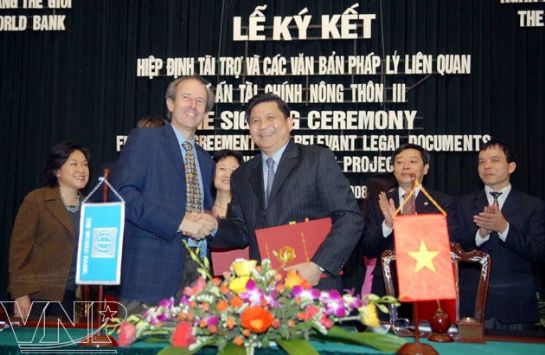
BIDV is entrusted by
the Vietnamese Government and the WB
to work as a wholesale bank
of the Project.
|
|
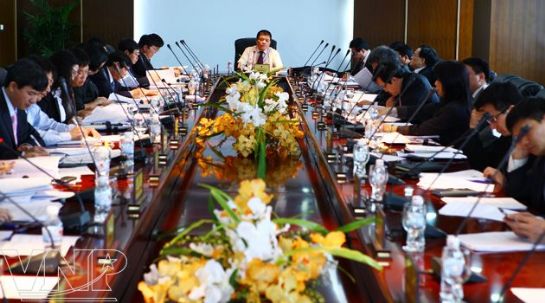
BIDV effectively regulates and manages the
Rural Finance Project.
|
|

The Project has
positive effects due to the fact that BIDV is successful in building
and maintaining an independent management board of the Project, with
a contingent of professional cadres who have high skills in managing
the international projects.
|
|
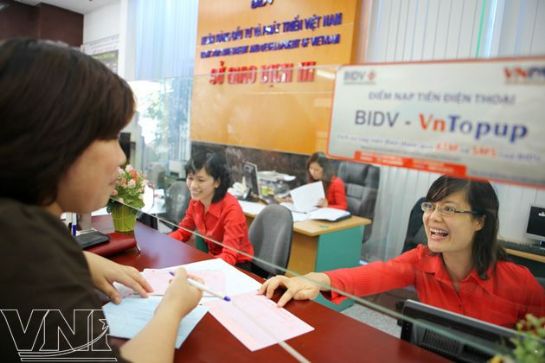
BIDV provides quick, convenient and safe
transaction services for the sub-borrowers.
|
The decision of the
Government and the World Bank to place RFP II in BIDV and entrust BIDV to
function as a wholesale bank is an appropriate option because BIDV is one
of the leading State-owned commercial banks in
Vietnam
, with over
50 years in operation and a large network. For many years it has been
audited with international standards, has transparent practices and is not
confined to providing information. BIDV leaders have pledged to follow and
reach the targets of institutional development so as to implement
effectively the distribution of the Project’s capital source.
To
successfully fulfill the role of a distributor, BIDV has been successful
in building and maintaining an independent management board of the
Project, with a contingent of professional cadres who have high skills in
managing international projects and establishing good relations with
domestic and foreign partners. The Project Management Board is placed in
BIDV’s Transaction Department III which has all functional rooms, approved
by the World Bank. In particular, for the first time the Environment Room
has been established in the system of functional departments and rooms of
a Vietnamese bank, which is in charge of assessing and checking the
measures on eco-environment protection as regulated.
BIDV’s
success in the RFP II is also attributed to the direction and assistance
from the Governmental offices and WB. The Inter-Branch Management Board of
the Project has been established and headed by a Vice Governor of the
State Bank, who gives guidance and timely assistance to solve the arising
problems to ensure the target and process of the Project. The WB and
banking cadres have provided effective assistance for the Project during
its preparation and implementation periods.
After RFP I and RFP II,
many farmers wish that other financial projects in rural areas will be
carried out, actively contributing to rural economic development, hunger
elimination and poverty reduction and improving rural environment. Among
many ODA projects in
Vietnam
, RFP I and
RFP II have been managed effectively, creating a basis for the Government
and international financial organizations to select partners. After the
success of RFP I and RFP II, the World Bank continued to select BIDV to
function as a wholesale bank for the Rural Finance Project III (RFP III)
capitalized at 200 million USD, raising the total capital of the three
projects to 548 million USD. RFP III began to be disbursed in June, 2009
and so far over 50 million USD has been disbursed, continually
contributing to building the rural areas more affluent and
beautiful.
Story: Nguyen Hoang
Thang
Photos: Tri Duc –
Thao Nguyen – VNP file – BIDV filenbsp;
|

